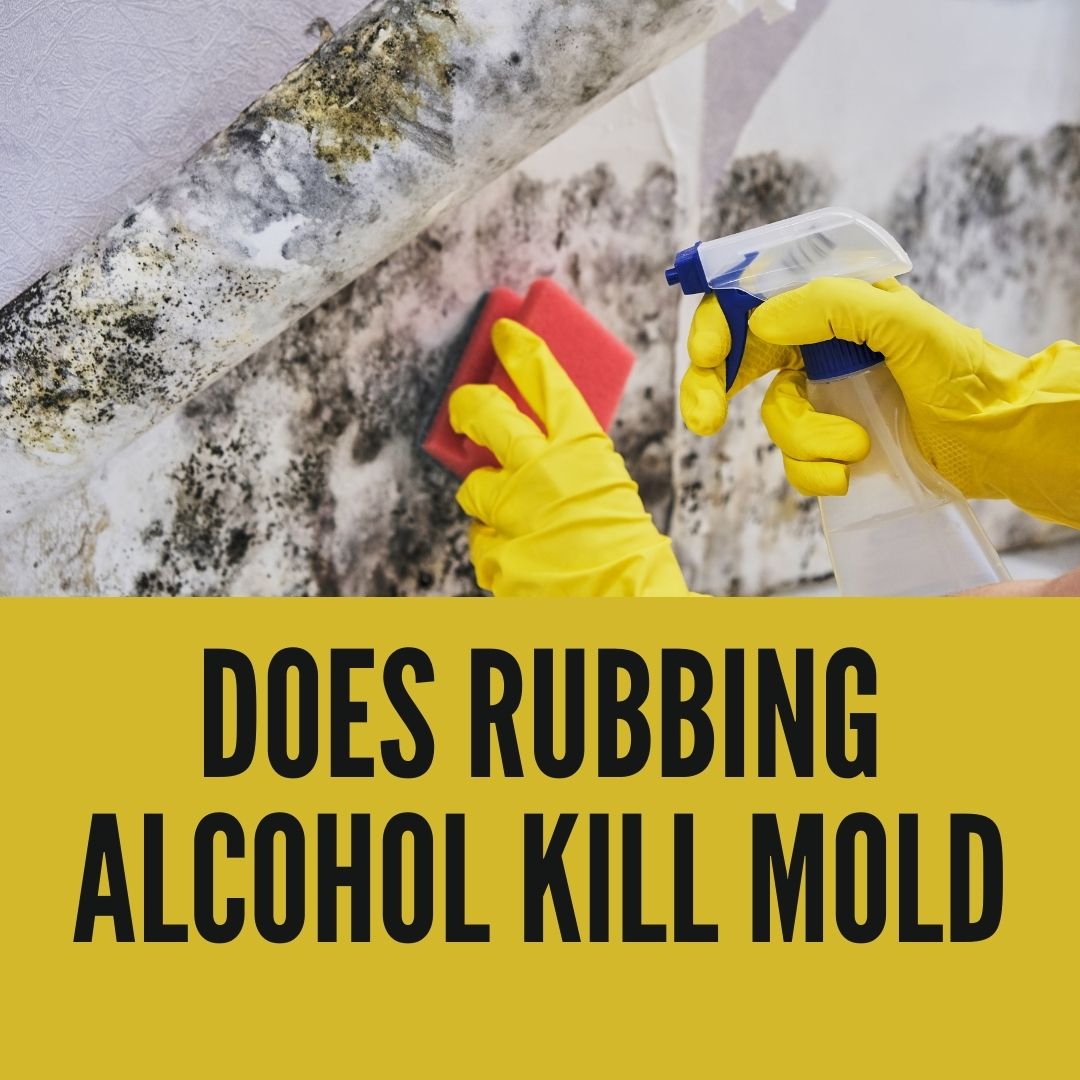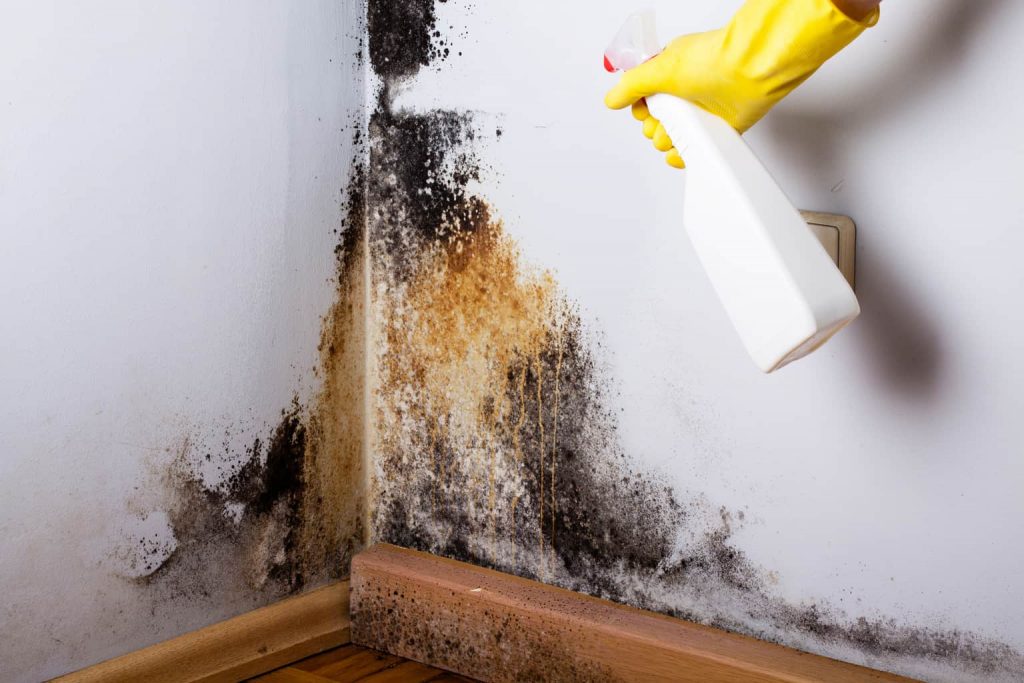
Recent studies have shown that around 47% of all homes in the United States have some form of mold or water damage (which almost always leads to mold). Aside from its unsightly appearance, mold is also a considerable health hazard.
So does rubbing alcohol kill mold? Yes, rubbing alcohol kills mold. Rubbing alcohol is able to penetrate the cellular membrane of the fungus that causes mold. This allows the alcohol to destroy the cells of the mold causing fungus.
Today, I’m going to explain exactly how rubbing alcohol kills mold and why it’s better than other solutions.
I’ll also explain exactly how to clean the mold to ensure long-lasting results so you’ll never have to worry about it again.

Using Rubbing Alcohol To Kill Mold
Mold can be a real pain to get rid of, but is it possible that alcohol could help?
Does alcohol kill mold? Yes, alcohol can be used to remove mold and kill some types of mold, but it has a lower success rate than other products. Alcohol is especially useful for removing mold from leather goods like suitcases, purses, coats, or furniture made out of fabric-covered material.
Mycotoxins are microscopic toxins that are produced by mold and help mold spores spread by colonizing spores.
These mycotoxins are also very harmful to inhale. When inhaled, they can trigger asthma and allergies almost instantly. Over the long term, they have also been proven to cause cancer and auto-immune disorders.
Growing up, we’ve all heard that the most common way to get rid of mold is to spray bleach.
While bleach is effective at killing mold on hard surfaces (such as glass), it’s unable to penetrate porous materials such as paper, wood, drywall, etc.
Mold is kind of like an iceberg. What you see on the surface is usually only a portion. The deep-set mold that lies inside your walls, ceilings, and floors is the real problem.
Unlike bleach, rubbing alcohol is able to penetrate all of these porous materials, making it a far better solution.
In addition to killing mold, alcohol is also natural. Bleach and other commercial mold killers can often release dangerous fumes that can cause headaches, nausea, and respiratory irritation.
Alcohol produces very little in the way of fumes and doesn’t come with all of the nasty side effects.
So rubbing alcohol is more than just a hand sanitizer, but how exactly does alcohol kill mold?
Is Rubbing Alcohol effective against all fungi?
Mold is a type of fungus, and there are many different types of it. Like most fungi, mold is incredibly resilient and spreads very fast.
Rubbing alcohol is able to kill the mold because it’s the perfect mixture of both water and alcohol. The water “denatures” the mold and is able to penetrate the cellular membrane of the fungus.
This, in turn, opens the door for alcohol molecules to enter the mold cells and break apart the bonds holding the mold together, effectively destroying it!
Another way that rubbing alcohol can help kill mold is that it functions as a drying agent. Although it’s wet when first applied, as it dries, it effectively pulls water and oils out of the surface.
Since water retention and water damage are some of the biggest causes of mold growth, removing the water altogether is a great way to prevent it from growing back!
Here are some other posts that might interest you:
- How To Make Your Own Rubbing Alcohol At Home
- Will Rubbing Alcohol Remove Acrylic Paint?
- Alternatives To Rubbing Alcohol
- Using Rubbing Alcohol To Clean Leather
- Can Rubbing Alcohol Be Used On Car Paint?
What Concentration Should I Use?
The concentration of the rubbing alcohol you use is critical. It can’t be too diluted, and it can’t be too strong.
Like Goldilocks, it has to be just right. As we mentioned above, rubbing alcohol’s ability to kill mold depends on both parts of the mixture- alcohol, and water.
If you use a low-strength blend, there may not be enough alcohol to kill the mold, and the water may actually contribute to even more mold growth.
If you use a blend that’s too concentrated, then there may not be enough water to penetrate the mold cell membranes, and it won’t be effective at all.
Most experts recommend using isopropyl alcohol that’s concentrated between 70% and 80%.
This is an effective mixture that contains just enough water to penetrate cell walls while still containing enough alcohol to ensure that all of the molds are destroyed and easy to remove.
Does Rubbing Alcohol Kill Mold Spores?
There is one small caveat to using alcohol to kill mold- it’s not very effective at killing mold spores. Spores are the fungus version of seeds.
They float through the air and anchor themselves to surfaces until they’re colonized by the mycotoxins and start to grow into mold.
Killing Spored With IPA
This means once you use the alcohol to kill molds, you’ll need to use another method to kill the spores.
Killing the spores is the only effective way to ensure that the mold doesn’t grow back again.
Unfortunately, rubbing alcohol is not sporicidal, meaning that it cannot kill spores (neither can bleach). In order to kill spores on surfaces, your best bet is to use rubbing alcohol’s close cousin- hydrogen peroxide.
There are other sporicides on the market, but hydrogen peroxide has proven to be an effective, natural solution that works almost every time.
Simply spray it on the surface, let it soak for a few minutes, and rub it away. You can also spray it in the air to remove spores. If you want to get rid of all airborne mold spores permanently, you may also want to invest in an air purifier with a HEPA air filter.
How To Remove Mold With Rubbing Alcohol
Removing and killing mold with rubbing alcohol is a relatively simple process. First, you’ll want to identify all areas of mold you want to treat.
It typically grows in the areas with the highest water concentration, such as bathrooms, kitchen sinks, or leaky ceilings.
After you identify the areas, fill a spray bottle with your 70% isopropyl rubbing alcohol, and thoroughly spray all of the affected areas.
Then, use a clean sponge to wipe away all of the surface molds. Throw it away immediately when you’re done.
After removing the surface mold, respray the area and make sure it’s soaked. Let it sit for 15 to 20 minutes, and then use a hard-bristled scrub brush or a slightly damp rag to scrub and deep-clean the surface.
After you’ve gotten rid of all of the surface mold, mist the space and spray the surface with hydrogen peroxide to kill all of the remaining spores so that it doesn’t grow back again!
In Summary
It’s also a good idea to switch out your home’s air filters as well since mold spores tend to grow and spread through the ventilation system.
While you may not be able to remove all of the airborne spores with alcohol alone, this method is a very effective way of removing any mold growth that you find in your home.
As long as you stay on top of the problem and treat it quickly, it will never have the chance to take over your home.

My name is Logan, and I’m a 36-year-old dad who owns a small pressure-washing company in the suburbs of Atlanta, Georgia. My main goal with rubbing-alcohol.com is to show you how versatile isopropyl rubbing alcohol can be! I hope. You find it useful.
